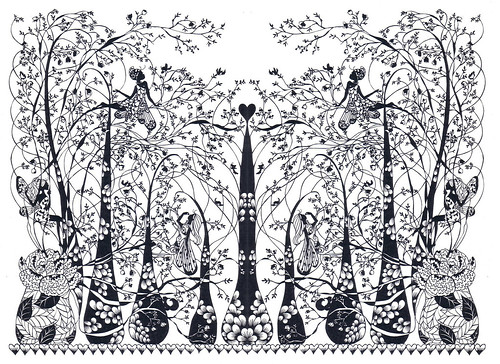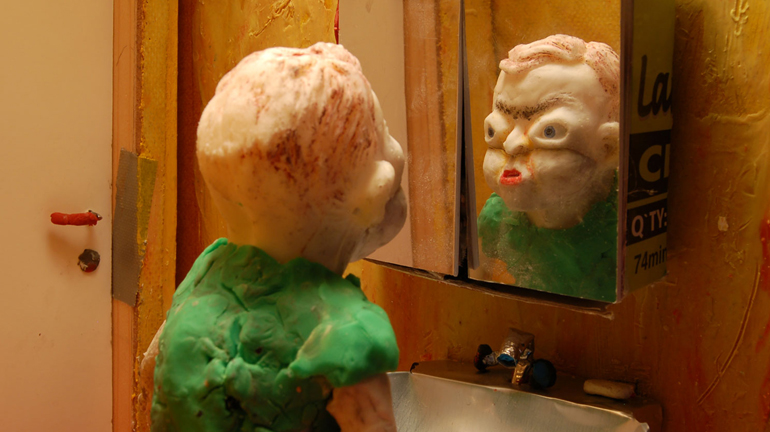featuring works by Thomas Allen, Hina Aoyama, Su Blackwell, Zoe Bradley, Yulia Brodskaya, Peter Callesen, Laura Cooperman, Béatrice Coron, Cindy Ferguson, Emily Hogarth, Molly Jey, Andrea Mastrovito, Nikki McClure, Heather Moore, Elsa Mora, Helen Musselwhite, Chris Natrop, Mia Pearlman, Casey Ruble, Rob Ryan, Justine Smith, Matthew Sporzynski, Yuken Teruya, Kako Ueda, Emma van Leest and Patricia Zapata
Were you the kind of child that ate your way all around the edge of the hole in the middle of a biscuit bit by bit with tiny teeth in little nibbles?
Were you the kind of child who spent much more time drawing margins and making multi-colored borders and underlining the titles and subtitles of your homework than ever actually doing it?
I know I was. As a consequence, I saw this book in the library, started to read the preface by Rob Ryan and simply could not leave it there. No way.
Now let me ask... Could you leaf through this book and still dismiss paper cutting as a serious art form? No. But I am sure you know somebody like that. Perhaps he spent all of his childhood diligently doing his homework. Let’s ignore him and do some important stuff.
It is not a how-to book. Its purpose is to inspire; and there are no rules anyway. No expensive materials or equipment is needed. Would you like to give it a try?
 |
| Hina Aoyama, La forêt harmonieuse les fées, 2007 |
 |
| Emily Hogarth, Woodlands, 2008 |
 |
| Heather Moore, Waiting, 2007 |
 |
| Rob Ryan, Boat Couple, 2006 |










.jpg)










